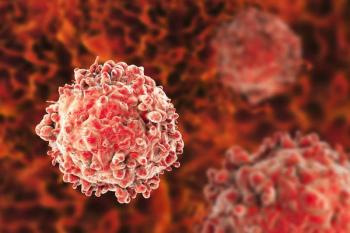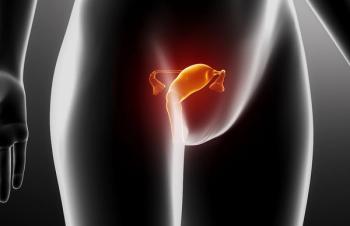
Oncology NEWS International
- Oncology NEWS International Vol 10 No 9
- Volume 10
- Issue 9
‘Knots’ in DNA a Focus of Future Cancer Therapy
NEW ORLEANS-"Knots" in DNA may become potential targets of cancer therapeutics, according to an investigator who described these new structures at the 92nd Annual Meeting of the American Association for Cancer Research (AACR abstract 1123).
NEW ORLEANS"Knots" in DNA may become potential targets of cancer therapeutics, according to an investigator who described these new structures at the 92nd Annual Meeting of the American Association for Cancer Research (AACR abstract 1123).
These so-called knots occur when DNA folds over upon itself, creating a variety of complex three-dimensional, four-stranded structures called quadruplexes.
Some of these knot-like structures have been linked to known oncogenes and cancer-triggering processes, and may possess active sites that could serve as targets for new cancer therapeutics, said Laurence H. Hurley, PhD, DSc, the Howard J. Schaeffer Chair in Pharmaceutical Sciences at the University of Arizona Health Sciences Center, Tucson.
"We are looking at the role of higher order DNA structures in regulating certain genes," Dr. Hurley said. "Specifically, we’re investigating the role a quadruplex plays in the regulatory region of c-myc, a known oncogene. The unregulated expression of c-myc is a causal event in the formation of many tumors and leads to activation of other important factors, such as telomerase."
In describing how quadruplexes work, Dr. Hurley noted that DNA sequence information is pivotal to transcription, replication, and recombination of molecules, and that DNA structure is dependent on certain intracellular conditions that may facilitate the stabilization of specific secondary structures.
Dependent on the primary DNA sequence, purine-rich strands of DNA can adopt quadruplexes, Dr. Hurley said. These quadruplexes appear to exist in biologically important regions of DNA such as the ends of chromosomes (telomeres), and in the regulatory regions of oncogenes like c-myc.
"Our research has focused on developing compounds that help this quadruplex to form, then bind to it and stabilize it, thereby turning off the c-myc gene," he said. Certain proteins, such as topoisomerase I, facilitate the formation of quadruplexes, he said.
Telomerase maintains telomere length in cancer cells, ensuring their continued ability to reproduce. Telomere DNA must be unfolded for telomerase to function. When telomeres are tied up in quadruplex knots, telomerase activity is reduced.
"Since we have shown that these compounds also facilitate quadruplex formation in telomeres," Dr. Hurley said, " we propose that the lowering of telomerase levels, telomere shortening, and the cell crisis we observe in tumor cells due to telomerase downregulation are synergistic consequences of quadruplex formation."
Edward Sausville, MD, PhD, associate director of the National Cancer Institute’s Developmental Therapeutics Program, remarked at a press conference that quadruplexes represent an "exciting revolution" in the knowledge of DNA. Molecular agents based on these structures may be especially useful as follow-up agents to traditional chemotherapy, he said.
Dr. Hurley’s research is licensed by Cyternex (San Diego, California), a biotechnology company developing novel small-molecule anticancer agents, including drugs with enhanced specificity toward cancer cells and the ability to regulate oncogene expression. The company has several patents pending.
Tom Farrell, president and CEO of Cyternex, said that his company is selecting a lead compound designed to accelerate quadruplex formation for their development program this year, with a clinical trial targeted for 2002.
Articles in this issue
over 24 years ago
Avon Launches ‘Kiss Goodbye to Breast Cancer’ Campaignover 24 years ago
Occult Tumor Cells in Marrow Predict Breast Cancer Survivalover 24 years ago
No Long-Term Advantage for Complete Response to Neoadjuvant Chemo/RTover 24 years ago
New Agents Tested with 5-FU in Rectal Cancerover 24 years ago
Anticonvulsants Can Alter Irinotecan Metabolismover 24 years ago
Thalidomide Appears Effective in Early-Stage Myelomaover 24 years ago
New ‘Goals for Pain Relief’ Scale Proves Reliable in Pilot Studyover 24 years ago
GVAX Autologous Vaccine Shows Activity in Lung CancerNewsletter
Stay up to date on recent advances in the multidisciplinary approach to cancer.
































































































